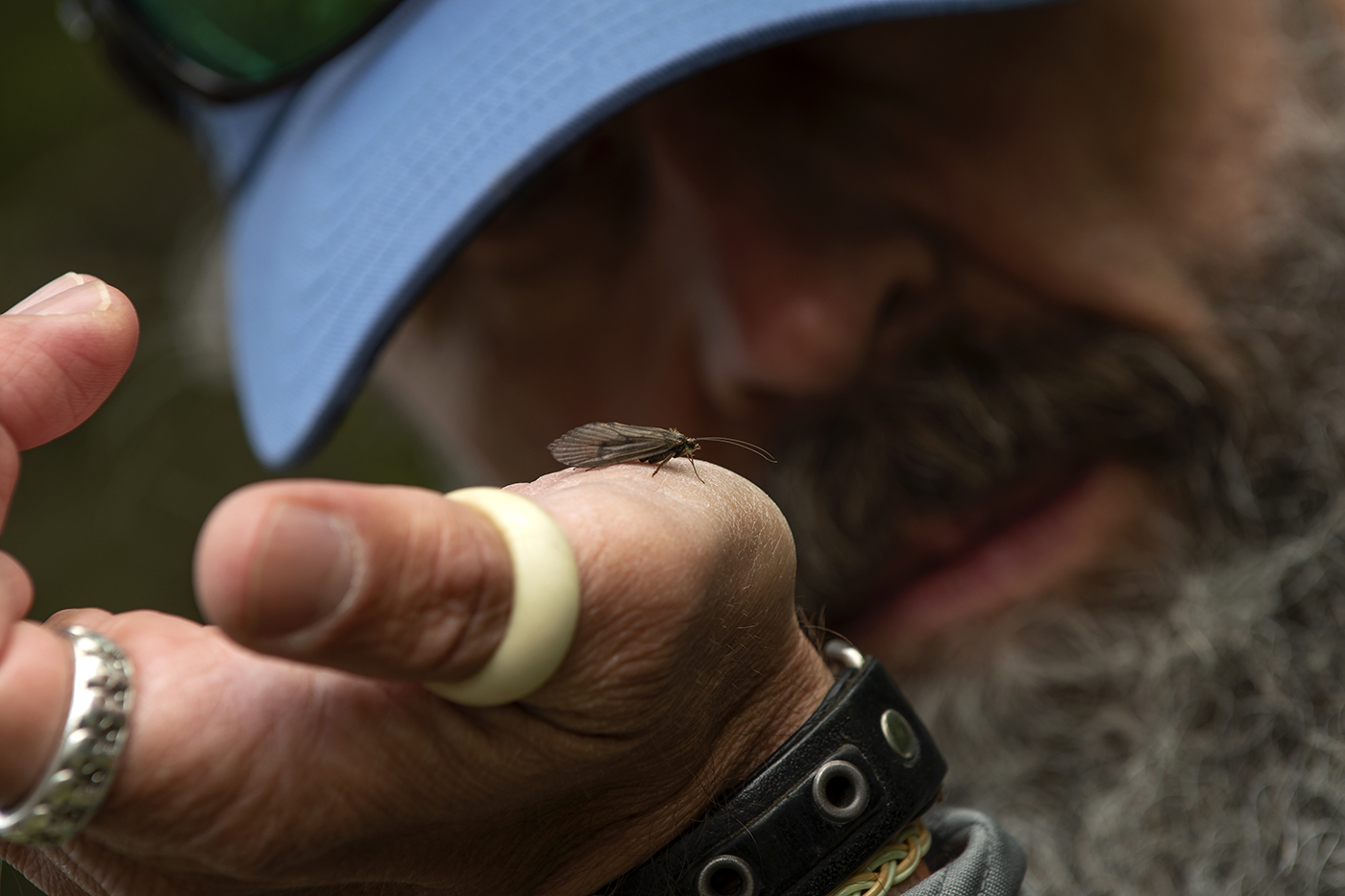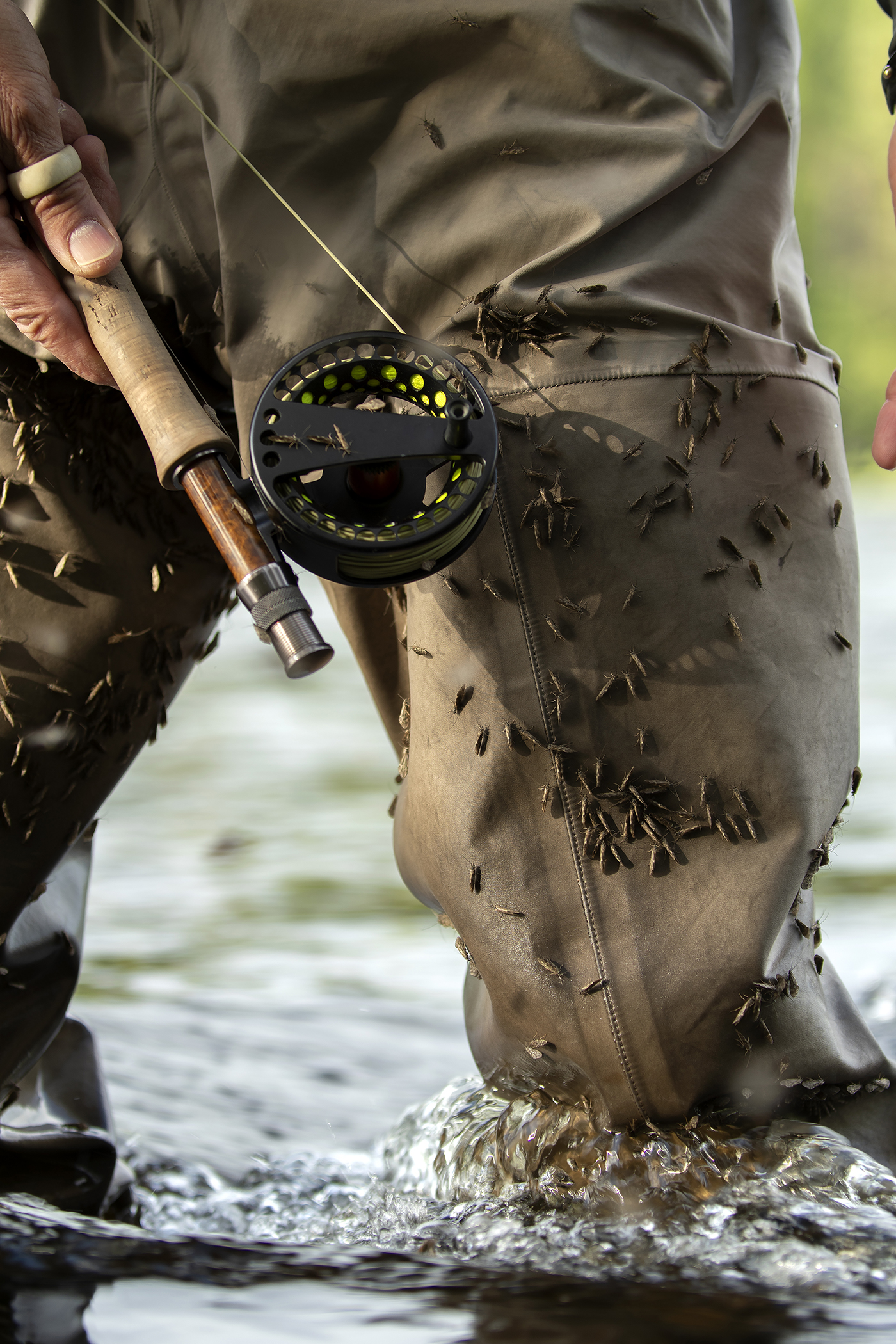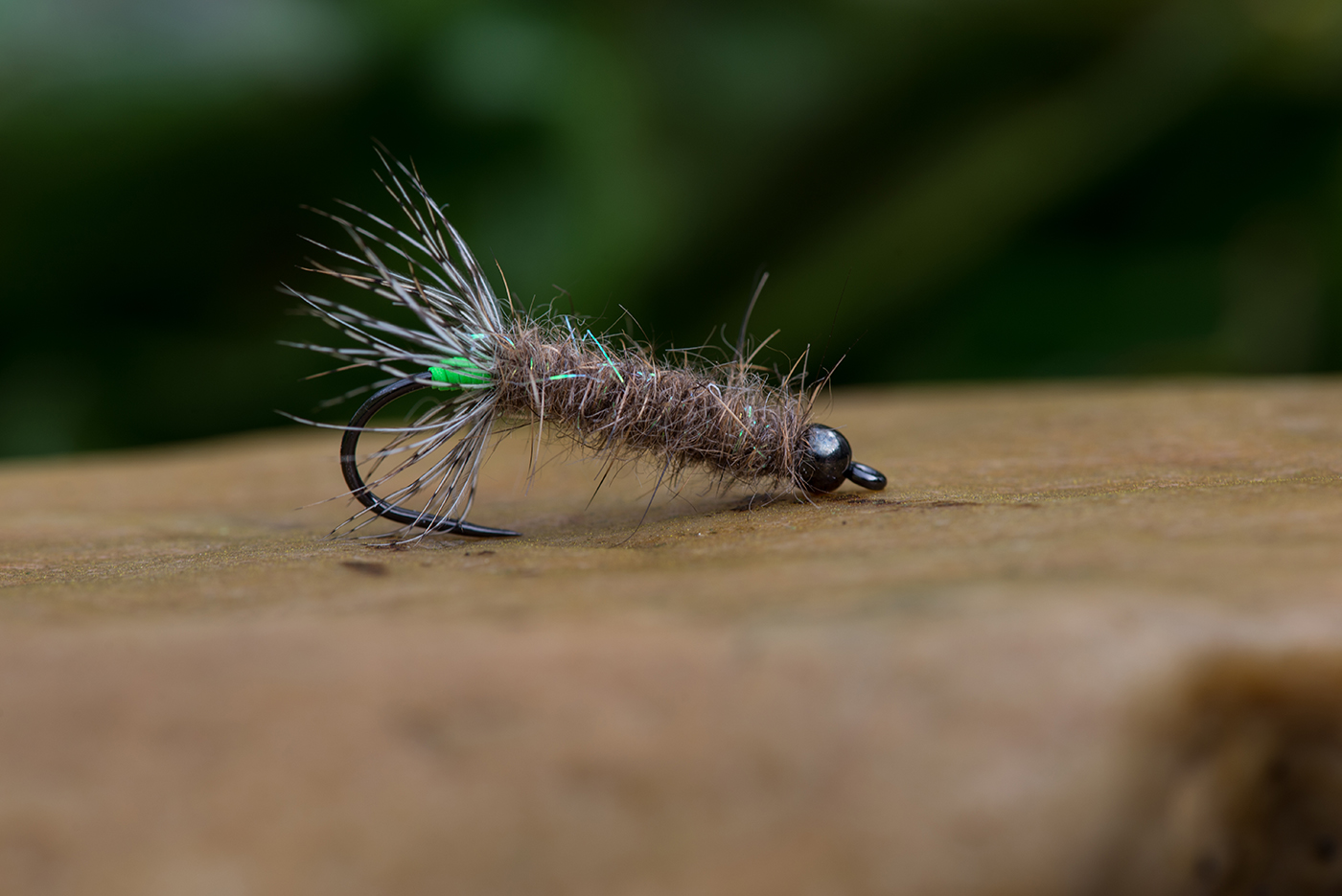
Two words for the same insect – an insect that is quite important to the trout- and grayling fisherman. In fact probably even more important than the mayflies since there are so many more species of caddis than there are mayflies. Like the mayflies they are important both as nymphs, emergers and adults and imitations are plentyful.

In Denmark alone we have over 170 species, while we “only” have app. 40 species of mayfly in Denmark. Worldwide there are around 15.000 species of caddis and “only “ app. 3000 species of mayfly. That alone is enough to understand that caddis are an important prey to trout and grayling. And add to that the fact that several of the caddis-species are considerably larger than most mayfly species, that only emphasises the point.
The most famous caddis imitation is probably Al Troth’s Elk Hair Caddis from 1957 – it might even be among the most famous of all dry flies. And for good reasons – it fishes extremely well, floats well, offers a believable profile, is fast and easy to tie and quite durable. In fact, more or less every trait you can wish for in a dry fly.

As I mentioned, some caddis are quite large, and the largest species in Scandinavia is the Phryganea grandis – the adults of which are up to 40mm long – that’s around an inch and a half! Big bugs! Tied this big I think the Elk Hair Caddis becomes too clumsy, but of course there are other alternatives.

The P. grandis is found in still- and slow flowing water, and I’m sure Morten and Henrik Kure, who are fishing Hökensås in Sweden will have seen plenty of them these past days. Ahrex’s own fly tying genius, Håkan Karsnäser also fishes Hökensås a lot (I think it’s fair to call it his home water), so he of course has an excellent Grandis-imitation, which can also be scaled down. If you master Håkan’s “big-caddis-style” and the Elk Hair Caddis, you’re set to go.











The deer hair head makes this fly an excellent floater that you can also skate over the surface, and when the big caddis are laying their eggs, this can be very effective.
The P. Grandis is one of the case-building species of caddis, and fishing a cased caddis imitation can be even deadlier than a dry imitation. And that brings me to mention another famous imitation, but of the cased caddis – Hans van Klinken’s legendary LeadHead Caddis.

We recently released a video with your’s truly tying the Pro Dry Caddis. I don’t call it that because I’m a pro, because I’m not. But because it uses the excellent Pro Sportfisher Caddis Wings, which is another easy way to get a high floating, very durable fly with the right profile. I hope you enjoy it.
